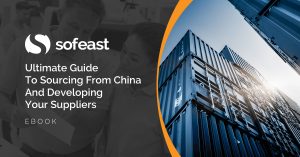This is a follow-up on What Causes A Bad Factory QMS Implementation? [Reason 1], as I expose a few common issues that make a factory’s work much harder than it should be.
If you are starting to work on a program to raise product quality in your factory, you may want to set a goal such as “get certified to ISO 9001 in 12 months”, but is it the right way to frame it to your employees?
You may be sending the wrong message.
The wrong mindset for implementing the ISO 9001 QMS
Their natural reaction will be “OK, what is the recipe to get certified? What is the minimum we can do to get that paper and to keep it over time? Can a consultant just give us that recipe?”
And that’s the wrong mindset!!
Each business has its own way of working, of pleasing customers, or keeping employees happy, etc. Each management team has a different intent for their business. This should be recognized.
The right logical choices to make your implementation a success
A book that makes this obvious is Playing to Win: How Strategy Really Works. The right logical choices are, in this order:
- Make your purpose clear
- Choose where to play (what industry, market segment…)
- Choose how you will win (how will you get a competitive advantage?)
- The previous point will dictate what capabilities you need to keep and develop
- And the previous 2 points will dictate what management systems your business needs
That’s why copying another company’s process flow, SOPs, WI, forms, objectives, internal audits, and other elements of the management system, is often a serious mistake.
Developing your management systems
Now, when you set out to develop your management systems (see point 5 of the list above), you need to keep these truths in mind:
- ISO 9001 is just a set of minimum requirements. It is a benchmark. It is NOT the description of the quality management system (QMS) your company needs.
- And, in addition, ISO 9001 gives a lot of freedom to your company. You can comply with the standard in many different ways.
For example, you need to define how mature your systems & processes will have to be. And, for a manufacturer, that decision is directly related to the production volume, since higher volumes mean a high risk.
I explained it in this video:
Is copying an existing operations manual effective?
Now, many companies seem happy to copy an existing operations manual in order to save time and avoid thinking too hard. That’s a safe approach, and it will safely get their businesses a mediocre performance.
How about you and your suppliers? Have you seen a company that has crafted its own original approach and reaped the benefits? Let me know by commenting below.
Ultimate Guide To Sourcing From China And Developing Your Suppliers [eBook]
This FREE eBook starts from the beginning, discussing whether you need to hire a sourcing agent, and follows the sourcing process right through to developing a trusted supplier’s quality and productivity.
There are 15 chapters over 80+ pages to explore, providing exhaustive guidance on the entire sourcing and supplier development process from start to finish, including:
- Identifying suppliers,
- Negotiations,
- Quality inspections,
- Developing Chinese suppliers,
- Improving factory quality and productivity,
- and much more…


